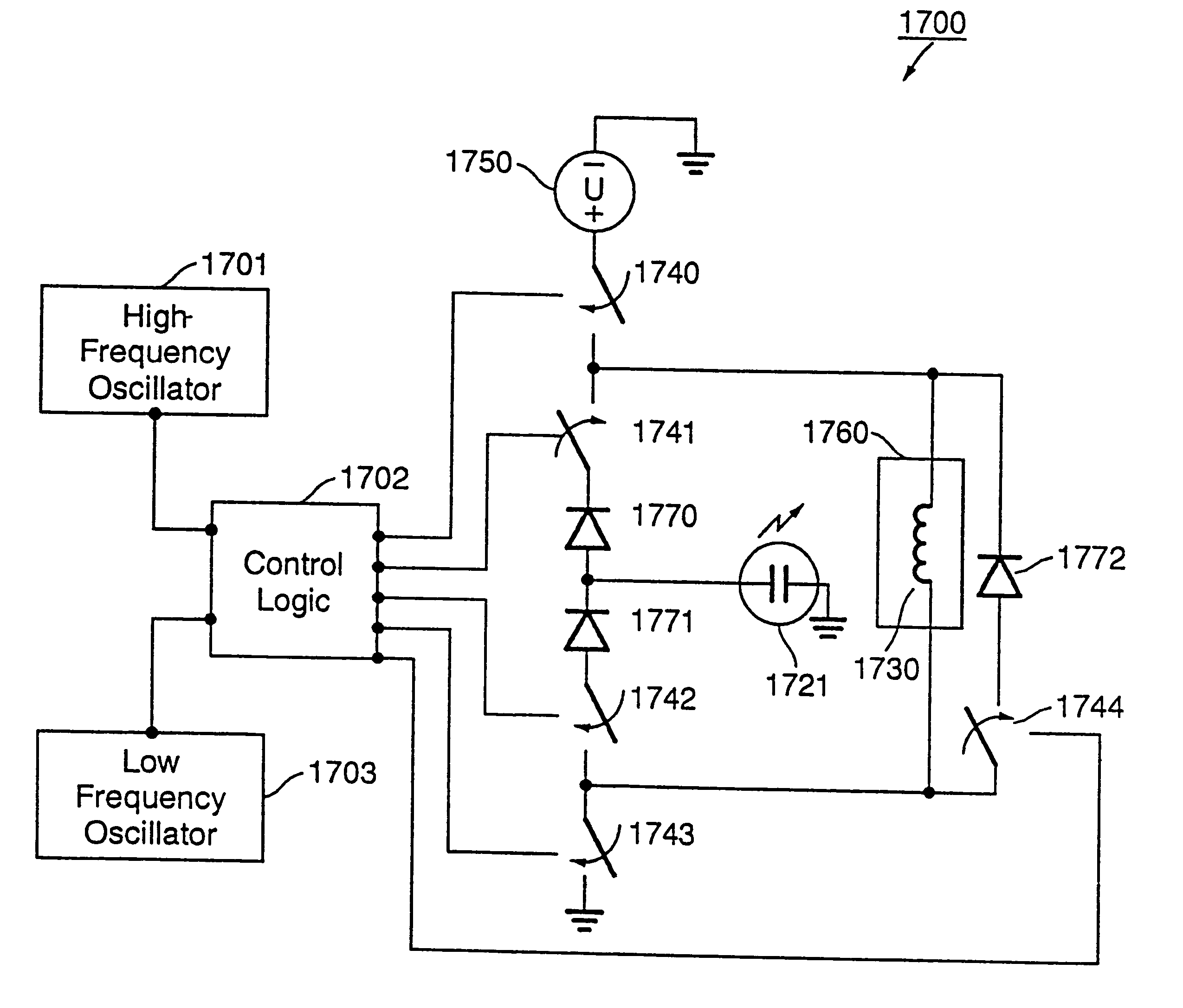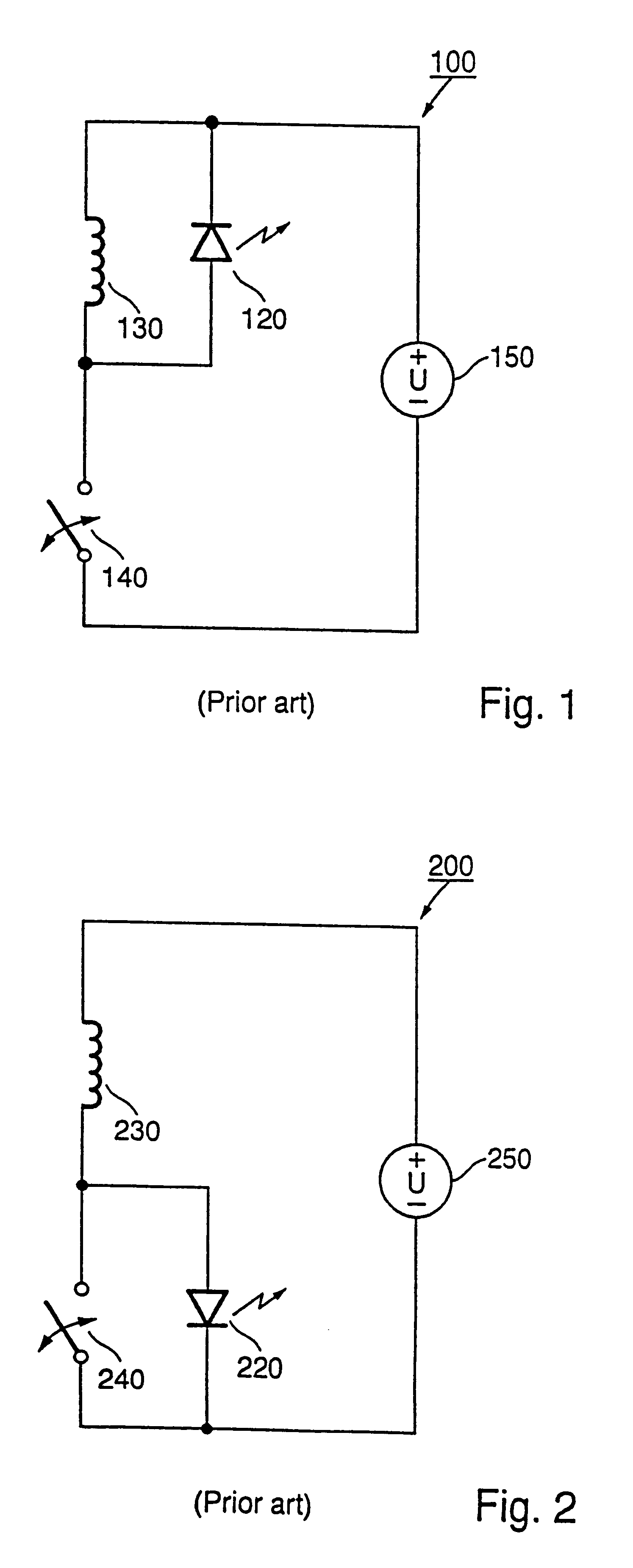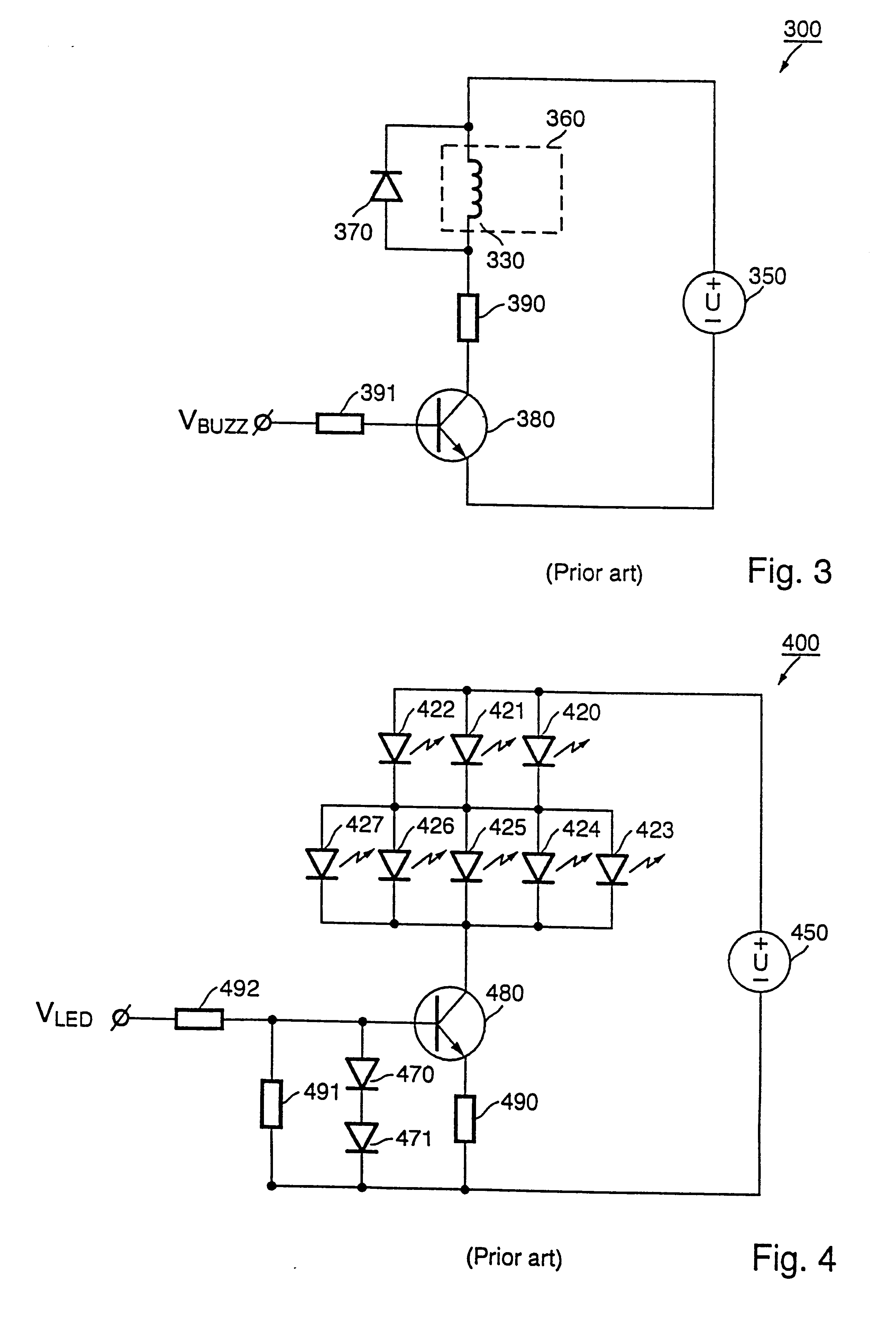Driver circuit and method of operating the same
- Summary
- Abstract
- Description
- Claims
- Application Information
AI Technical Summary
Benefits of technology
Problems solved by technology
Method used
Image
Examples
first embodiment
FIG. 8 illustrates a circuit diagram of an LED and buzzer driver 1000 according to the present invention. The driver comprises a voltage source 1050 connected to first and second connection points (not shown), a buzzer 1060, a switch 1040 and four LED's 1020-1023. The buzzer 1060 comprises an inductor 1030 as described above. A first electrode of the inductor 1030 is connected to the electrode of the voltage source 1050 having the most positive potential, "plus-pole". A second electrode of the inductor 1030 is connected to a first electrode of the switch 1040 and to the anodes of the first and third LED's 1020, 1022. The cathodes of the first and third LED's 1020, 1022 are connected to the anodes of the second and fourth LED's 1021, 1023, respectively. The cathodes of the second and fourth LED's 1021, 1023 and a second electrode of the switch 1040 are connected to the electrode of the voltage source 1050 having the most negative potential, "minus-pole".
In operation, the switch 1040 ...
second embodiment
FIG. 9 illustrates a circuit diagram of an LED and buzzer driver 1100 according to the present invention. The driver comprises a voltage source 1150 connected to first and second connection points (not shown), a buzzer 1160, a switch 1140 and four LED's 1120-1123. The buzzer 1160 comprises an inductor 1130 as described above. A first electrode of the switch 1140 is connected to the electrode of the voltage source 1150 having the most positive potential, "plus-pole". A second electrode of the switch 1140 is connected to a first electrode of the inductor 1130 and to the cathodes of the first and third LED's 1120, 1122. The anodes of the first and third LED's 1120, 1122 are connected to the cathodes of the second and fourth LED's 1121, 1123, respectively. The anodes of the second and fourth LED's 1121, 1123 and a second electrode of the inductor 1130 are connected to the electrode of the voltage source 1150 having the most negative potential, "minus-pole".
In operation, the switch 1140 ...
third embodiment
FIG. 10 illustrates a circuit diagram of an LED and buzzer driver 1200 according to the present invention. The driver comprises a voltage source 1250 connected to first and second connection points (not shown), a buzzer 1260, a first n-type bipolar transistor 1280, a second n-type bipolar transistor 1281, three resistors 1290, 1291, 1292, and four LED's 1220-1223. The buzzer 1260 comprises an inductor 1230 as described above. The collector of the second transistor is connected to the electrode of the voltage source 1250 having the most positive potential, "plus-pole". A first electrode of the inductor 1230 is connected to the emitter of the second transistor 1281. A second electrode of the inductor 1230 is connected to a first electrode of a first resistor 1290. A second electrode of the first resistor 1290 is connected to the collector of the first transistor 1280 and to the anodes of the first and third LED's 1220, 1222. The cathodes of the first and third LED's 1220, 1222 are con...
PUM
 Login to View More
Login to View More Abstract
Description
Claims
Application Information
 Login to View More
Login to View More - R&D
- Intellectual Property
- Life Sciences
- Materials
- Tech Scout
- Unparalleled Data Quality
- Higher Quality Content
- 60% Fewer Hallucinations
Browse by: Latest US Patents, China's latest patents, Technical Efficacy Thesaurus, Application Domain, Technology Topic, Popular Technical Reports.
© 2025 PatSnap. All rights reserved.Legal|Privacy policy|Modern Slavery Act Transparency Statement|Sitemap|About US| Contact US: help@patsnap.com



